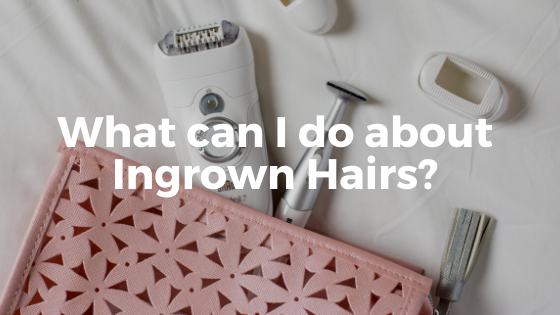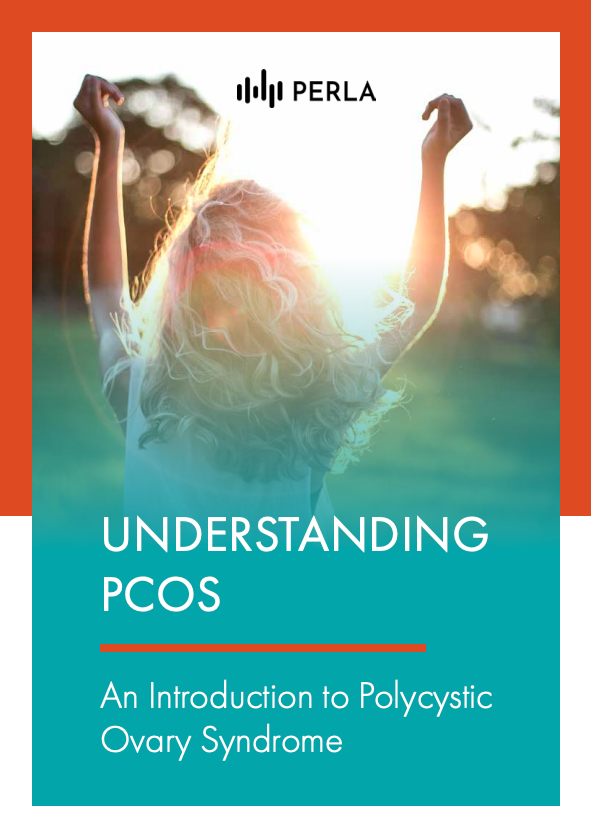Unwanted hair growth is a common dermatological problem, especially among women with PCOS, and there’s a need for a safe, inexpensive, and non-invasive method of removing hair on a long-term basis. While plucking and shaving are the safest and simplest way to manage hirsutism, they sometimes cause ingrown hairs. Learn how to deal with ingrown hairs and how to prevent them from returning.
Preventing and Managing Ingrown Hairs
Ingrown hair is a condition where a hair shaft penetrates or re-enters the skin instead of growing out of the follicles away from the skin. The trapped hair may become inflamed forming a raised spot (papule) or pus-filled bump (pustule) on the skin. An inflamed ingrown hair is called pseudofolliculitis, also known as “shaving bumps” or “razor bumps.”1
It looks similar to folliculitis, an inflammation of hair follicles due to infection, but the inflammation in pseudofolliculitis is not mainly caused by an infection, but rather by the trapped hair beneath the skin.
What causes ingrown hairs?
The condition occurs more frequently among people with coarse or curly hair, but may also occur in women who frequently shave or pluck their hair.2 It is usually confined in the area of male pattern hair growth in the face and neck but may also involve the scalp, legs, and pubic area.
The hair shafts in some people have a tendency to form tight coils after shaving, the sharp ends may pierce the skin near the opening of the follicles.3 Inflammation occurs when:
- the hair has been cut too short, so that it retracts into the hair follicle, directly penetrating the follicle wall or
- hair was left to grow for a few days after shaving or plucking, then it curves backward penetrating the adjacent skin.4
How can it be treated?
The only certain cure for ingrown hairs is to stop hair removal (shaving, waxing, and plucking) in the affected area for a minimum of 4-6 weeks to allow the inflammation to resolve and allow the hair to grow at a sufficient length that ingrowth will not occur.4
General recommendations:1,4,5
- Ingrown hair can be removed using tweezers or sterile needles, but this can be painful and not practical for those with widespread ingrown hairs.
- Brushing the skin with a sponge or soft-bristled toothbrush to release the hair is a quick solution but may not always be effective.
- Inflammation can be reduced using creams or ointments with mild-potency steroids.
- If there’s an infection, your doctor may prescribe an antibiotic ointment. If the infection is severe, you may need to take a short course of oral antibiotics.
- Retinoid creams, commonly used for treating acne, is an effective exfoliant. It removes dead skin cells so that trapped hairs can break through.
- Applying benzoyl peroxide twice a day for several weeks is also effective in treating ingrown hairs.6
- Apply a warm compress to the affected area to soften the skin, then gently exfoliate to encourage the hair to come out of the skin.
How to prevent ingrown hairs?
For women with hirsutism related to PCOS, shaving is considered the preferred approach rather than plucking. Pulling or tweezing hairs is not advocated because it can further traumatize the hair follicle, causing irritation or infection.7
You may explore permanent hair removal methods if shaving or plucking is causing ingrown hairs. If shaving is your preferred method, make sure to optimize your technique. Below is the recommended shaving technique for those who are prone to ingrown hairs.8-10
- Apply a moisturizer the night before shaving.
- Use single-blade razors to prevent shaving too closely. Razors with two or more blades lead to retraction of the hair into the follicle.
- Wash the area with warm water and a gentle cleanser.
- Apply shaving foam, cream, or gel generously. Leave the shaving product for 2 to 3 minutes to soften the skin.
- Shaving should be done in the direction of hair growth, rather than against it.
- Electric trimmers are safer than razors as they only cut hair above the skin surface and they do not injure existing papules or pustules.
- Do not use the same razor for more than five days.
- After shaving, rinse the area and dry with a clean towel.
- Apply medications (topical antibiotics or benzoyl peroxide) or aftershave lotion with soothing ingredients.
- Use hydrating cream if the skin is dry.
Other hair removal methods
Chemical depilatories, containing potassium thioglycolate or calcium thioglycolate in cream preparations, reduce the possibility of ingrown hair, but they may cause irritation to some people. Never use chemical depilatories on areas with ingrown hairs as this can aggravate the condition.
For severe cases, the treatment of choice is laser hair removal.11 It is more effective, more comfortable, and has fewer side effects than electrolysis. This should be performed by a trained specialist. Ask your doctor, PCOS care team or dermatologist for hair removal solutions that could work best for you.
Sources
- Pseudofolliculitis. British Association of Dermatologists; 2019. https://www.bad.org.uk/shared/get-file.ashx?id=122&itemtype=document. Accessed July 25, 2020.
- Ogunbiyi A. Pseudofolliculitis barbae; current treatment options. Clin Cosmet Investig Dermatol. 2019;12:241-247. Published 2019 Apr 16. doi:10.2147/CCID.S149250
- Chua S, Affleck A, Kulkarni K. Florid hyperplastic folliculitis on the chin in a male renal transplant patient. Clin Exp Dermatol 2008;33:98–99.
- Burns T, Rook GA, eds. Rook’s Textbook of Dermatology: In Four Volumes. 8th ed. Wiley-Blackwell; 2010.
- Scott Moses M. Pseudofolliculitis Barbae. Fpnotebook.com. https://fpnotebook.com/derm/Hair/PsdflcltsBrb.htm. Published 2020. Accessed July 25, 2020.
- Cook-Bolden FE, Barba A, Halder R, Taylor S. Twice-daily applications of benzoyl peroxide 5%/clindamycin 1% gel versus vehicle in the treatment of pseudofolliculitis barbae. Cutis. 2004;73(6 Suppl):18-24.
- American Society for Reproductive Medicine. Hirsutism and Polycystic Ovary Syndrome. Reproductivefacts.org. https://www.reproductivefacts.org/news-and-publications/patient-fact-sheets-and-booklets/documents/fact-sheets-and-info-booklets/hirsutism-and-polycystic-ovary-syndrome-booket/. Published 2020. Accessed July 25, 2020.
- Ribera M, Fernández-Chico N, Casals M. Pseudofoliculitis de la barba. Actas Dermo-Sifiliográficas. 2010;101(9):749-757. doi:10.1016/j.ad.2010.03.011
- Jasterzbski TJ, Schwartz RA. Pseudofolliculitis cutis: a vexing disorder of hair growth. British Journal of Dermatology. 2015;172(4):878-884. doi:10.1111/bjd.13427
- Gray J, McMichael AJ. Pseudofolliculitis barbae: understanding the condition and the role of facial grooming. Int J Cosmet Sci. 2016;38:24-27. doi:10.1111/ics.12331
- Kauvar ANB. Treatment of pseudofolliculitis with a pulsed infrared laser. Arch Dermatol. 2000;136(11):1343-1346. doi:10.1001/archderm.136.11.1343


